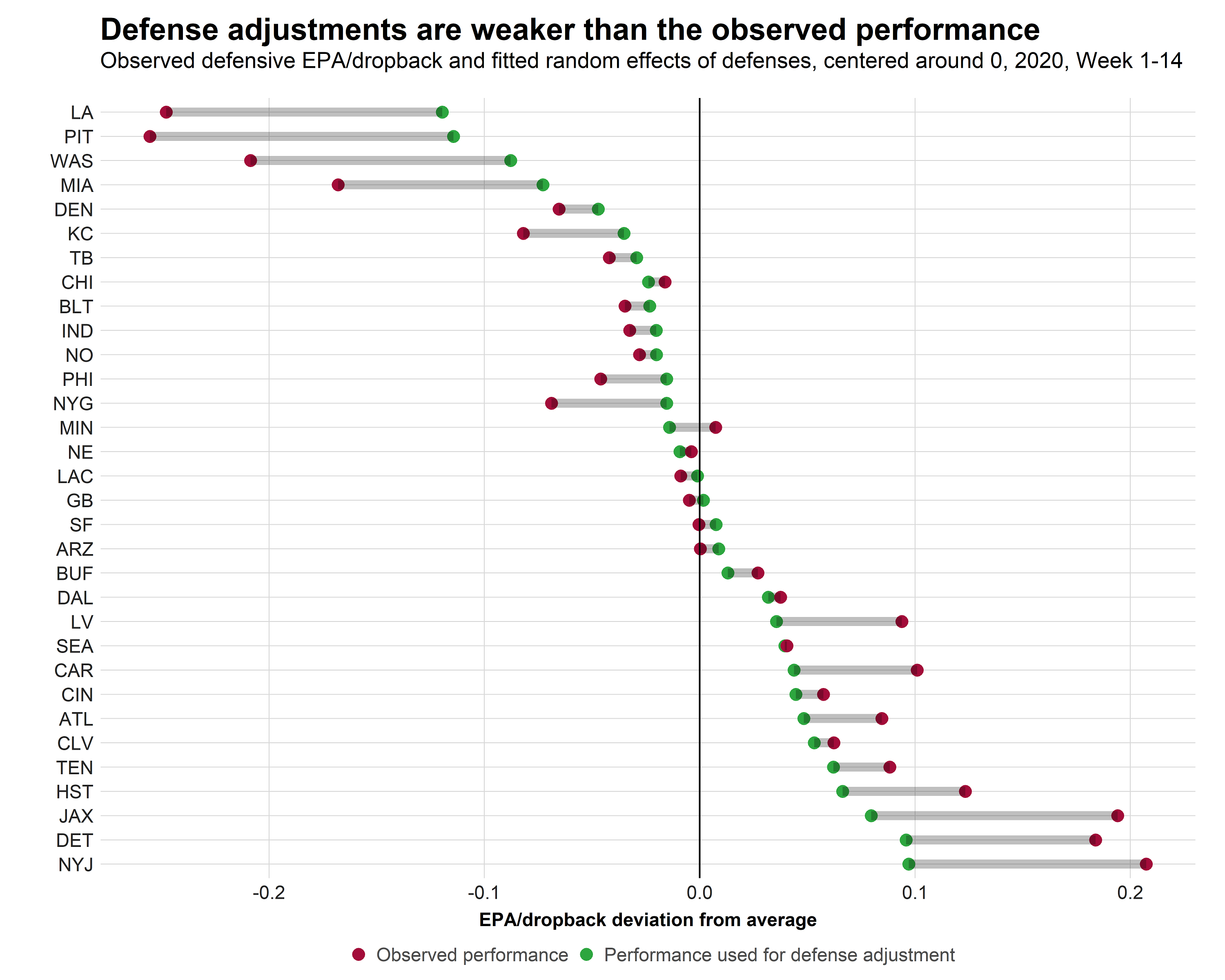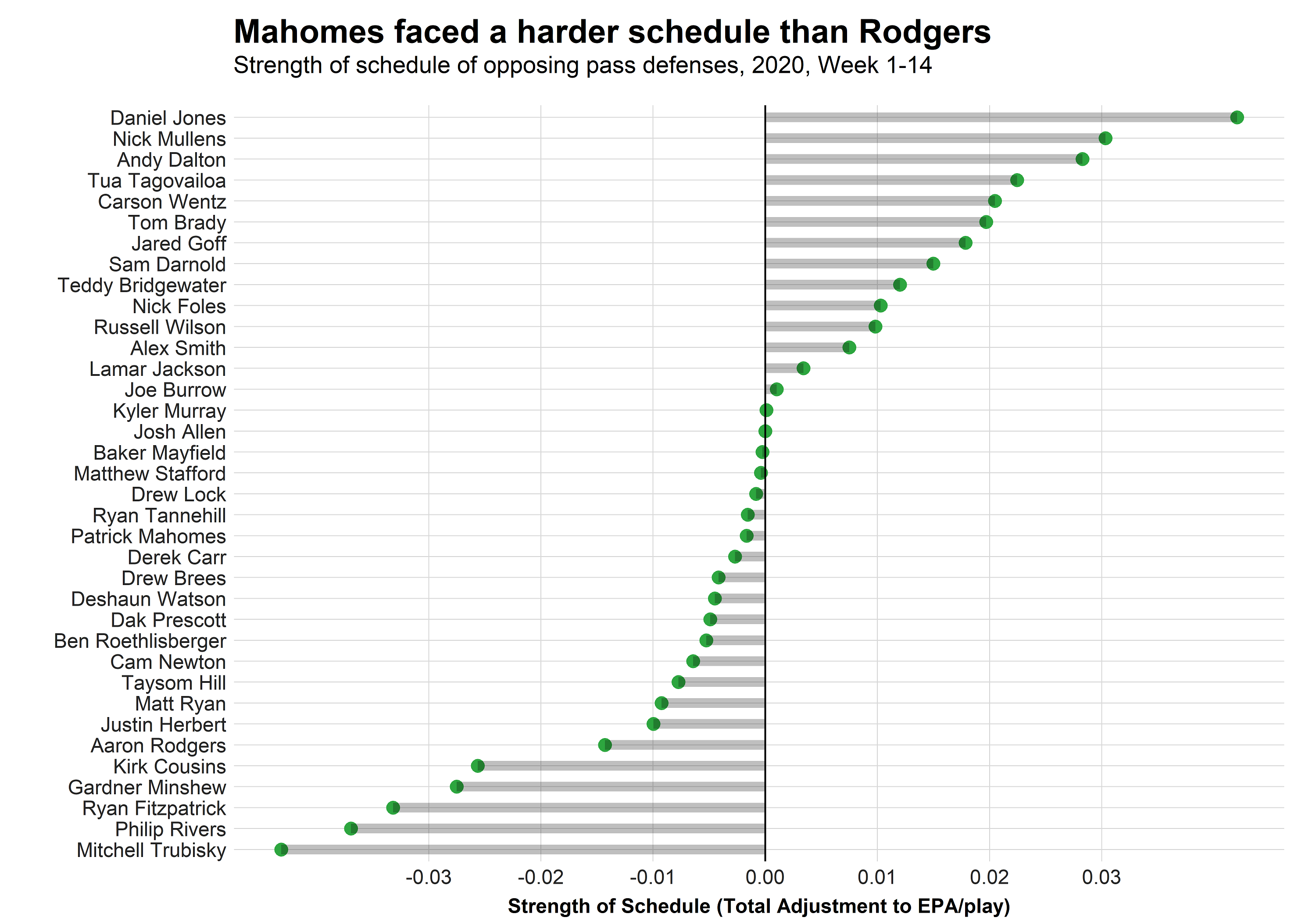We are now hitting the final stretch of the regular season, and the NFL MVP race between Aaron Rodgers and Patrick Mahomes will soon come to an end. But how did Week 14 shake up the pecking order when it comes to these two elite quarterbacks?
Before we get to the rankings, here is a short overview of the methodology:
- We trained a model to predict the winner of the MVP award at the conclusion of the regular season. The model is based on three regular-season parameters:
- The number of wins (and how that ranks across the league)
- Rank in the division
- Expected points added per play (and how that ranks across the league)
- Since the model works with regular-season stats in hindsight, we need to simulate the remaining games of the season in order to feed the model. We invoke our weekly win-total simulations as well as a Bayesian Updating method to simulate each quarterback's expected points added (EPA) per play in 2020.
- During the season, we update our beliefs on all quarterbacks with Bayesian Updating, incorporating up-to-date EPA per play and making adjustments based on both the PFF passing grade and the quality of defense faced.
- Using these updated beliefs, we can simulate the EPA per play for the remainder of the season for each quarterback.
- The number of wins and whether a QB wins his division is obtained from our weekly win-total simulations.
Defense adjustments
As we do every week, we will go through the strength of defenses first, explaining how we adjust for each defense before identifying the quarterbacks who played the most difficult schedule (and received the highest positive adjustments).

The recorded strength of each defense leads to the following adjustments for quarterbacks (a positive adjustment means a difficult schedule so far; a negative adjustment means an easy schedule).

The two remaining candidates



 © 2025 PFF - all rights reserved.
© 2025 PFF - all rights reserved.